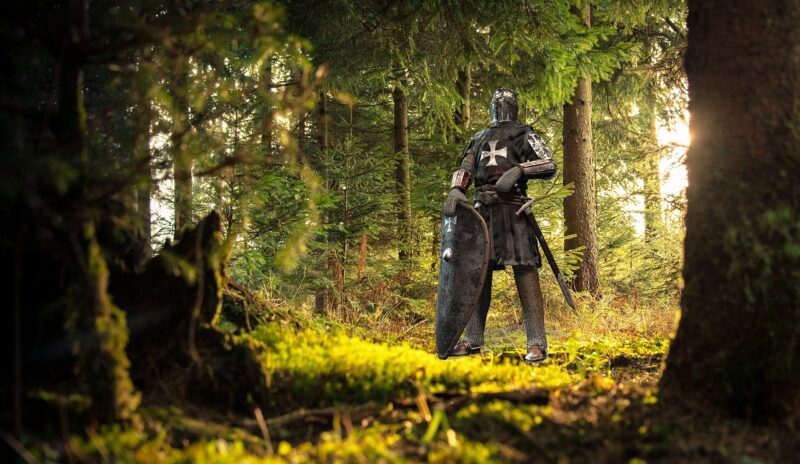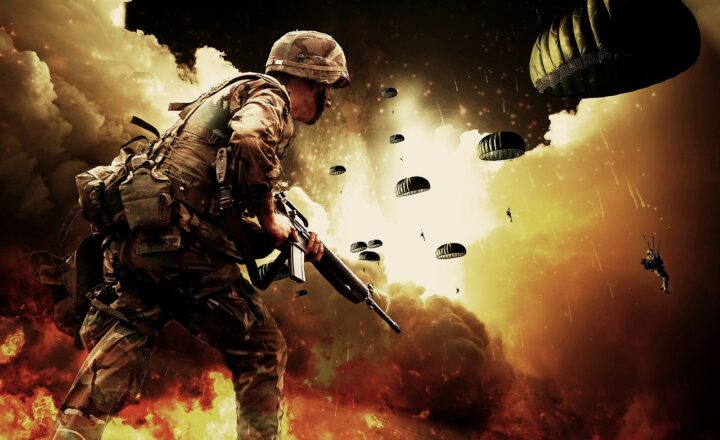
In the tumultuous times of the medieval period, combat and chivalry reigned supreme. Knights were the elite warriors of their day, trained to be physically formidable and mentally agile. However, one unexpected skill that many of these knights had to master was dancing. This article explores why dancing was not merely a form of entertainment but a significant aspect of battle readiness for medieval knights.
1. The Importance of Physical Agility in Battle
During the Middle Ages, knights engaged in various forms of combat, from one-on-one duels to large-scale battles. A knight’s physical prowess was crucial, as it determined their effectiveness on the battlefield. To enhance agility, dexterity, and coordination, knights were encouraged to partake in activities that tested their physical limits.
Dancing requires a combination of strength, flexibility, and rhythm, all of which are vital for a knight. The movements developed through dancing helped knights improve their footwork and overall balance, which were essential during melee encounters or while performing intricate maneuvers in a jousting match.
2. Building Connections Through the Dance Floor
Dancing in medieval society also served as a means of strengthening alliances and fostering relationships. Feudal lords often hosted grand balls where knights and their ladies would dance, allowing them to cultivate connections.
Through these social gatherings, knights would forge alliances that could be crucial in times of battle. Marriages often happened as a result of these dances, strengthening bonds between families. Therefore, a knight who was adept at dancing could navigate both the battlefield and the ballroom with ease, thus securing loyalty and support from their peers.
3. Dance as a Form of Military Training
Interestingly, certain dance forms were not just about aesthetic movement. They incorporated strategies and formations that mimicked those used in warfare. For example, the lively, rhythmic movements found in popular medieval dances reflected the fluidity required during combat maneuvers. The footwork necessary for complex dances echoed that of battle tactics, further intertwining martial and social disciplines.
Knights often practiced routines that revolved around specific formations in dance, which mirrored the formations they needed to maintain during actual combat. Training in dance allowed them to be better prepared for maintaining order and coordination within their ranks.
4. Psychological Benefits of Dancing
In battle, mental resilience and composure are equally critical as physical capabilities. Dancing, with its harmony and rhythm, played an important role in developing psychological fortitude. Engaging in the structured movement of dance can relieve stress, build confidence, and boost morale, all of which are essential attributes for a knight about to face his adversaries.
Moreover, the joy found in dancing and the social interactions it promotes can also alleviate the burdens of warfare, allowing knights to foster a sense of camaraderie that can be beneficial during prolonged campaigns. A knight who is emotionally stable and socially connected is vastly more capable of facing the trials of combat.
5. Dance Training Techniques for Knights
Dance training specifically designed for knights was often overseen by martial and dance instructors. Various techniques were employed to ensure warriors could master both combat and dance.
Some common methods of training included:
- Partner Dances: Practicing dance with partners honed the skills necessary for working in tandem with others, mirroring teamwork often seen in battle formations.
- Choreographed Movements: Structured routines helped familiarize knights with maintaining rhythm and flow, crucial for both dancing and combat moves.
- Improvisational Dancing: Encouraging knights to explore spontaneous movement fostered adaptability, allowing them to respond in real time during combat situations.
By integrating these practices into their training regimens, knights became well-rounded individuals, poised to excel both socially and on the battlefield.
6. Cultural Significance of Dance in Medieval Society
In medieval society, dance was a cultural staple that went beyond mere entertainment. It was a reflection of societal norms, values, and even the stratification of classes. Knights were not just warriors; they were icons of chivalry and culture. Their participation in dance allowed them to embody these ideals, illustrating their grace, strength, and refinement.
Through their dancing, knights demonstrated that they were well-rounded individuals, capable of both violence and elegance. This duality earned them respect and honor, which were paramount in their chivalric code.
7. The Legacy of Dance in Modern Martial Arts
Today, the importance of movement in combat has not been lost. Modern martial arts often incorporate elements that echo the principles of dance, focusing on fluid movement, control, and balance. This signifies that the coordination and agility honed by knights in the dance halls remain relevant.
Achieving mastery in martial arts requires a similar blending of physicality and mental discipline, akin to what was practiced centuries ago. The lessons learned through medieval dance continue to impact how contemporary warriors understand their bodies and movements in combat.
Conclusion
In conclusion, the seemingly whimsical art of dancing entwined itself deeply with the preparation and readiness of medieval knights for battle. While knights were renowned for their prowess in combat, their ability to dance played a crucial role in their overall effectiveness as warriors. From improving physical agility to building crucial relationships through social gatherings, dance fulfilled a multifaceted role in the lives of these noble combatants.
Engaging in dance was as critical as mastering swordsmanship or horsemanship, highlighting the importance of a well-rounded education for those seeking excellence in both war and peace. Today, we can appreciate this unique blend of culture and combat, recognizing that the skills learned on the dance floor may have been just as valuable on the battlefield, defining the enduring legacy of the medieval knight.






